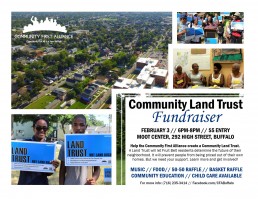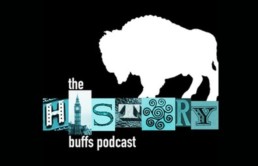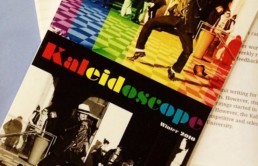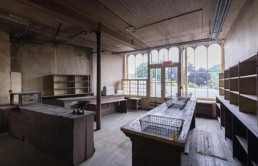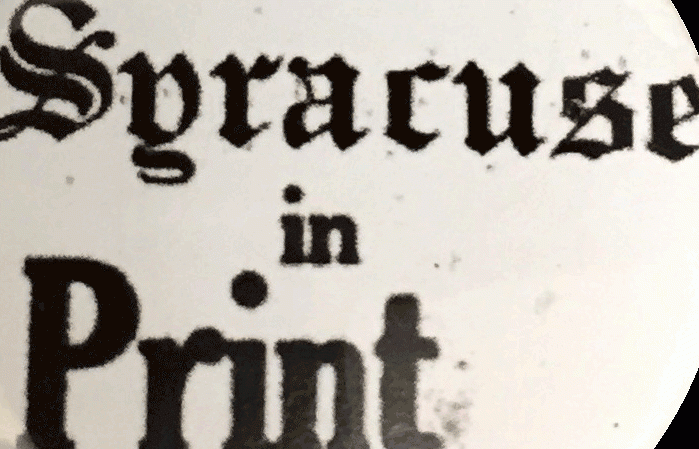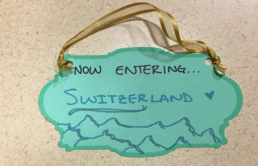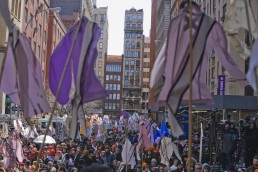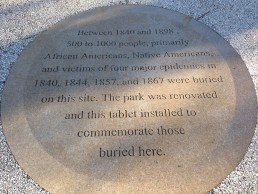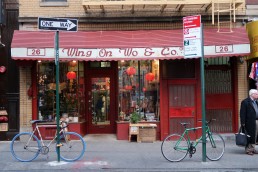Life on a Nickel’s Edge: Struggle and Dignity in Buffalo’s Fruit Belt
A partnership with the community to develop a Community Land Trust in Buffalo's historic Fruit Belt.
by John Marsland
Event
Learn More
Project Interviews:
Dennice Barr: Part 1 & Part 2
Nathaniel Cole
Zaid Islam
FB Community Land Trust Fundraiser: Part 1, Part 2, Part 3, Part 4, Part 5
Share
Fruit Belt Facts:
The Fruit Belt makes up the majority of Buffalo’s Census Track 31. Its total boundaries are Main Street on the west, Best Street on the north, and the Kensington Expressway on the east and south.
The area is the home of Anchor Bar, the original Buffalo Wings joint, Locust Street Art, Buffalo Federations of Neighborhood Centers, City Honors High School, and Futures Academy.
Since 2000, the Buffalo Niagara Medical Campus has been steadily growing in the area. This includes the world-renowned medical facilities at Roswell Park Cancer Institute, as well as Buffalo General Hospital, the new University at Buffalo Medical School, and many other medical-related institutions. The growth and expansion of the BNMC and related development pressures have sparked concern among Fruit Belt residents over the future of their community.
The neighborhood has long been working class and poor. Beginning in the 1850s, it was primarily a neighborhood of German and other recent European immigrants. But waves of Great Migration migrants from the southern United States during the middle of the 20th century gradually shifted the demographics to being majority African American.
As of a 2013 American Community Survey, the ethnic breakdown of the Fruit Belt is:
- 83% African American, compared to 38% for Buffalo as a whole;
- 9% white, compared to 50% for Buffalo as a whole;
- 8% “other,” compared to 12% for Buffalo as a whole;
- 5% Latino, compared to 10% for Buffalo as a whole
The population of the Fruit Belt has declined from 3,837 persons in 1990 to 2,670 in 2013 Many people (57%) in the Fruit Belt live in no family households, meaning living alone or living with non-family roommates. Nearly a quarter (24%) live in single parent households, with only 19% of residents being married as of the survey.
Women head 92% of single-family households and 54% of no-family households. Additionally, 92% of children live in women-headed households.
Humanities New York 2016-2017 Public Humanities Fellowship:
In the fall of 2016, History PhD Candidate John Marsland from the University at Buffalo began a public humanities fellowship in which the creation of the FB Community Land Trust would form a focal point. Working with Steve Peraza and Sam Magavern at the Partnership for the Public Good, this project sought to complete the Historic and Cultural Restoration aspect of PPG’s “A Plan the Bears Fruit” policy brief. This project began by attending a series of meetings of the Community First Alliance to learn about the efforts for the Land Trust and the upcoming (February 3, 2017) fundraiser. At the meeting, interviews were scheduled with various organizers for CFA to discuss development in the Fruit Belt and the creation of the Land Trust.
Interviews took place in January and February 2017. Asim Johnson arranged interviews with Zaid Islam, Nathaniel Cole, and Denise Barr.
Denise Barr’s family has owned the same house for over 70 years. She speaks of the close- knit community of her street, but she also notes that houses and people are gone now. Her biggest concerns are that “now we have so many vacant lots” and “what is going to happen” to older residents as rents and property taxes rise. Regarding the people who have historically lived in the Fruit Belt, Ms. Barr believes people had been pushed into the neighborhood because they had little other alternative, and now they are being pushed again. “If we don’t win this [Land Trust]…people won’t be able to afford to live there anymore.”
The February 3, 2017 Fruit Belt Community Land Trust fundraiser was an amazing event. Over 200 people crowded into the Moot Senior Center for food, speeches, music, and a basket raffle. Over $5,000 was raised that night and put the Land Trust movement well on its way to establishing the FB Community Land Trust.
Buffalo Common Council members as well as residents of the neighborhood and community organization leaders were present. Nathaniel Cole, Zaid Islam, India Walton, and Denise Barr gave speeches.
Nathaniel Cole spoke about getting involved with the Community First Alliance shortly after moving to the Fruit Belt a couple of years previously.
“We have a huge problem. As you all know there is an expansion of the Buffalo Niagara Medical Campus. The City has control of these lots, and believe me when I say, they will give it away at the right price. Which makes me think ‘where are we gonna go when they sell these lots?’ Because, I’ll tell you right now, they don’t care about us. We’re not even on their minds.”
India Walton spoke about noticing high prices when she came to the Fruit Belt two years ago. She works at Buffalo General Hospital, so she thought living near the BNMC would be a good fit. She expected rents of $500-600, but she pays $1,200. “I just thought it was a shame.” She reflects, “even though I’m ok paying that, I’m not ok with the people I have grown to love being pushed out of the neighborhood they love and built and stayed and invested in when no one else cared.”
Further Reading and Links:
Partnership for the Public Good. “A Plan That Bears Fruit: A Community Land Trust and Other Tools for Neighborhood Revitalization in the Fruit Belt.” Policy Brief, June 22, 2016.
Partnership for the Public Good. “A Community Benefit Agreement for the Buffalo Niagara Medical Campus.” Policy Brief, March 9, 2016.
Community First Alliance. “Rising Tide: A Blueprint for Community Benefits from the Buffalo Niagara Medical Campus.” 2016.
“Fruit Belt Strategic Plan (draft).” July 2016.
Henry Louis Taylor, Jr. “A Historical Overview of Blacks in the Fruit Belt: The Continuing Struggle to Build a Vibrant Community.” A report of the University at Buffalo Center for Urban Studies, School of Architecture and Planning. July 1, 2009.
“Community Meeting with the McCarley Residents.” Report of the Center for Urban Studies, School of Architecture and Planning. December 5, 2011.
“Development of a Turning Point Scenario: A Strategic Plan and Action Agenda for the Fruit Belt/Medical Corridor.” A report of the Center for Urban Studies, School of Architecture and Planning. January 10, 2001.
About this Fellow
I earned my PhD from the Department of History at the University at Buffalo in May 2018. My field of specialization is modern British history, and my dissertation, “We’ll Help Ourselves: The English Working-Class Struggle to Remake Itself, 1968-1985,” is on late-20th century English working-class radical direct action, including squatting, claiming welfare benefits, providing refuges for battered wives, and defending black and Asian communities against racist attacks. While a PhD Candidate, I was also the Humanities New York Public Humanities Fellow for 2016-2017. With this fellowship, I documented and presented the creation of Fruit Belt Community Land Trust in Buffalo’s East Side. After graduation, I decided to leave academia to pursue a career in the non-profit sector. I have been an Economic Development Corps/AmeriCorps member at the Old First Ward Community Center as the Resource Center and Outreach Coordinator, and in October 2019 started a new AmeriCorps service year as a Rapid Rehousing Case Manager for Catholic Charities of Buffalo.
Hero image: Sign welcoming people to the Fruit Belt neighborhood of Buffalo. Courtesy of John Marsland.
Related Content
Upstate Historical
An interactive website that brings the rich history of Upstate New York to life through stories and tours…
The History Buffs
A podcast series—founded by seven historians from Buffalo, NY—that explores diverse topics from a historical perspective…
The Kaleidoscope Project
The Kaleidoscope Project was founded on a simple premise: when kids have access to stories that validate their lives, they feel more empowered to learn.
The Sunday List
A restoration of a bakery run by Jewish immigrants that served the entire community in Kingston, NY for about 80 years.
November 1, 2018Oral History,Remembrance,Local History,PreservationExhibit
Syracuse in Print
Syracuse in Print celebrates our analog now by partnering with local libraries, makerspaces, and other community organizations that value print culture in its eclectic, varied forms.
Bordering the Imaginary: Art from the Dominican Republic, Haiti, and Their Diasporas
An art exhibition and related programming that explored the historical relationship of the Dominican Republic, Haiti, and their diasporas in New York.
Literature in Medicine
A project bringing college students into local hospitals to explore the intersection of art and health.
Remember the Triangle Fire
A night of multi-media commemorating the Triangle Shirtwaist Factory fire and supporting continuing efforts to improve labor conditions around the world.
Making the Public History Classroom Public
Fieldwork by students at the Olde Towne of Flushing Burial Ground Conservancy which resulted in major projects throughout New York City.
September 10, 2019Local History,Education,PreservationSchool Curriculum
Chinatown Movements: Past, Present, & Futures
A series of public events highlighting historic and contemporary social movements in Manhattan's Chinatown.
September 11, 2019Oral History,Remembrance,Local History,Preservation,DiasporaEvent

